From their first day on the job, employees at Dorel Juvenile Group learn to never treat the products they make like just another piece of plastic."What I'm assembling is potentially going to save someone's life. You can't just go anywhere to get that." – Mark Evanko
The 950 people who work at the company's Columbus, Indiana factory work three shifts round the clock to build four million child car seats a year. The seats must withstand violent impacts and save the lives of the children sitting in them.
That responsibility remains at the forefront of every decision the company makes – from the type of plastic and foam it uses to investing in technology inspired by the auto racing industry. These seats could be made outside the US for less money, but Dorel makes it a point to look beyond the bottom line.
"Overseas, they sell you something, and the employees aren't tied to what you're about," said Mark Evanko, senior vice president of quality control at Dorel. "Here there's this intrinsic feeling that what I'm assembling is potentially going to save someone's life. You can't just go anywhere to get that." {C}
Ten years ago, Dorel executives considered closing their US operations. The company, by then a subsidiary of Montreal-based Dorel Industries Inc., was under pressure to cut costs by moving to countries with cheaper labor.Dorel is one of the last children's car seat manufacturers left in the United States.
"It was pretty close," says Gary Pruitt, executive vice president of operations, who sat through tense meetings about a potential relocation in 2003 and 2004. "At the time, everybody was chasing low-cost manufacturing. The exodus was happening. All our competitors went overseas."
A closure would have been devastating for Columbus, a town of just over 44,000 residents. Generations of Columbus families have worked in the plant since it opened in 1935 as Columbus Specialty Company to manufacture stovetop equipment. In the early 1940s, it shortened its name to Cosco and transitioned to making children's products in 1949. The first car seats came off the line in 1972, and Dorel bought Cosco in 1987, renaming it Dorel Juvenile Group.
But unlike many others companies in the industrial Midwest, company executives chose to stay in America.
Today, Dorel is the largest manufacturer of children's car seats, and one of the last few to do so in the United States. Instead of leaving, the company reinvented itself. It committed $28 million to install state-of-the-art tooling equipment in 2004. In 2010, it followed with another $10 million investment for a research center.

Some factors no doubt played roles in keeping the company in Columbus: a renegotiated contract with unionized employees, state and local tax incentives, and continuing to import some fabrics from Asia. But the decision to stay ultimately went beyond the bottom line.30 years ago, car seats were essentially high chairs with the metal legs chopped off.
It was people who made the difference.
Chapter One: People Not Plastic
Kelley Clayburn's ties with this factory go back 60 years. His dad started working here in 1954. Two days after Kelley graduated from high school in 1985, he followed in his father's footsteps and joined the Dorel assembly line.
During his almost 30 years with the company, Clayburn has had a firsthand look at the car seat's evolution from a simplistic contraption to a high-tech product. He remembers when car seats were essentially high chairs with the metal legs chopped off. Now he operates Dorel's 3D printers, which have revolutionized the way the company creates new products.
Guiding the two printers, Clayburn can build and test prototypes of new car seat designs in about three days, down from the six weeks it used to take. And he can use a variety of materials in the printers to test different plastics.
"The changes I've seen here, the technology has grown exponentially," says Clayburn of the factory, which has moved from processing metal to injection molding and now is moving into the future with 3D printers. "It's going from Fred Flintstone to The Jetsons in 20 years."
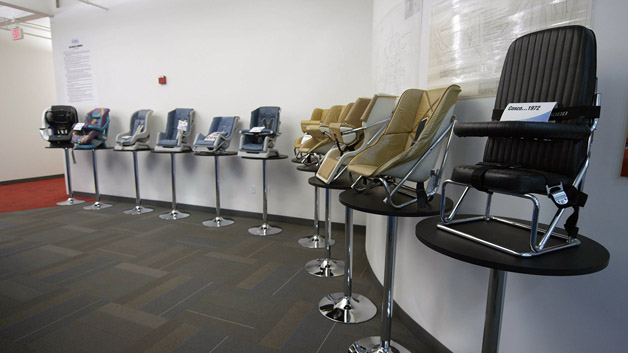
In addition to investing in technology, the company has consolidated its operations so engineers can design new products, prototype them, test them and then turn them over to an assembly line to make the seats all under one roof.Drivers racing at 200 miles per hour help the company build better child car seats.
Manufacturing starts with colorless plastic pellets unloaded from train cars. The pellets are pumped through overhead pipes into machines that melt, mold and turn them into newly formed plastic parts, which are snapped together by employees along the assembly line.
"And we keep our quality hub right in the middle of the floor to make sure it's all done right," says Kenny DeBord, the plant's operations manager. "If there's something wrong, we don't send an email about it. We're right there."
Chapter Two: Racing to a Better Seat
Tony Stewart, the three-time NASCAR Sprint Cup Series champion and former IndyCar winner, was born and still lives in Columbus, less than an hour's drive from the Indianapolis Motor Speedway, home to the Indy 500.
Until three years ago – despite having a hometown racing champ – Dorel didn't think much about how drivers racing at 200 miles per hour could help the company build better child car seats.
But through friends in the tight-knit racing community, the company's engineers had heard about advances in plastics and foams they thought they could adapt to car seats. Through mutual friends, David Amirault, Dorel's director of product marketing and design, was introduced to the founders of Bald Spot Sports, an Indianapolis company that builds customized cockpits for some of the best racecar drivers in the world.
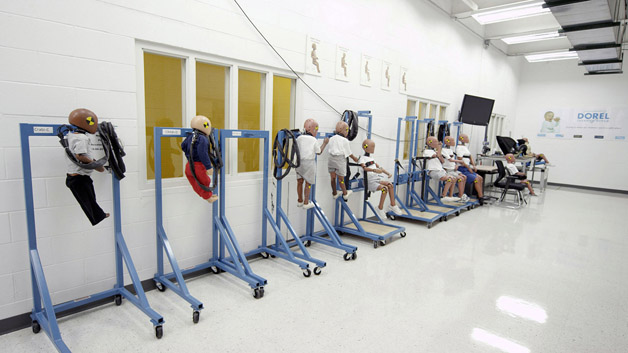
"There's a great mountain of information coming out and shared here, just because of where you live or maybe who your neighbor is," Amirault says of living and working in a state known for its racing roots. "Being here, we had the benefit of that access."Material and design choices play a huge role in determining whether a child lives or dies.
The company's founders, Travis and Cameron Cobb, knew if they could create racecar interiors that save drivers from death, they could help create a safer car seat. They came up with a honeycomb-shaped pattern that is imprinted throughout foam that now lines the plastic housing of many of Dorel's seats. The pattern helps spread the G-forces that occur in a car crash.
It looks simple to an untrained eye. But an untrained eye may also see what Dorel makes as just a car seat. Cameron Cobb sees it as a complex energy-management system, in which materials and design play a huge role in determining whether a child lives or dies.
"The material has to do things just right," he says. "... Anybody can put a block of foam into a car seat, sure you can, but until you understand what you're trying to do with it, it doesn't matter."
Chapter Three: Setting a Safety Standard
Sarah Arthur never saw the van coming. It plowed into the driver's side of her Porsche Cayenne going 50 miles an hour, knocking her unconscious.
When Arthur came to a few seconds after the accident, she briefly forgot her three-month-old daughter was in the back seat. When a bystander asked her if anyone else was in the car, she screamed, "My baby!" With some assistance, she ran to the rear passenger door. Her daughter, Ella Rose, was happily playing with her own hands, safely strapped into her Dorel car seat.
"She had a big smile on her face," her father, Chris, wrote in a letter to the company. That letter, along with dozens of others recounting similar experiences, is prominently displayed on a bulletin board near the end of the factory's assembly line.
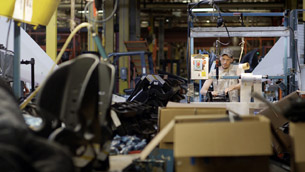
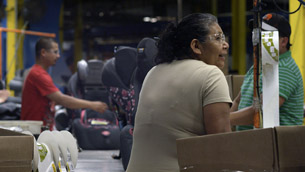
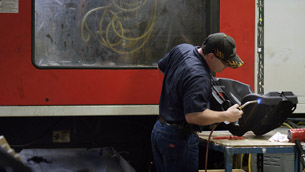
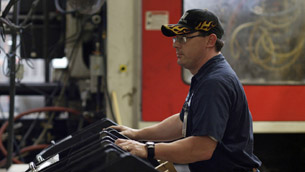
Ella Rose was lucky. Car crashes remain the leading cause of death for children under age 12, killing more than 9,000 children between 2002 and 2011, according to the Centers for Disease Control. Side-impact crashes, like the one Ella Rose survived, account for a third of those deaths.Car crashes remain the leading cause of death for children under age 12.
Unlike frontal collisions, which can unfold over 300 milliseconds, side impact crashes are over and done in 89 milliseconds on average. They're often violent and deadly because the drivers don't see each other and thus do not react.
"And if you think about it, there's not much there to protect you," says Terry Emerson, Dorel Juvenile Group's director of quality assurance, child restraint systems and regulatory affairs.
In front-end collisions, crumple zones and airbags protect occupants. In a side-impact crash, there's much less impact-absorbing structure to protect you, although new vehicles now include side airbags.
In 2002, Congress mandated that the National Highway Traffic Safety Administration develop side-impact standards for car seats. Twelve years later, those standards still haven't been finalized.
Hoping to spur the government into action, Dorel petitioned NHTSA to develop a standard in 2009. The agency denied that petition earlier this year, but in recent months, it has sought public comment on proposed rules that include many standards from Dorel's petition.
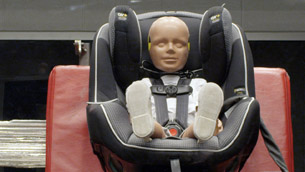
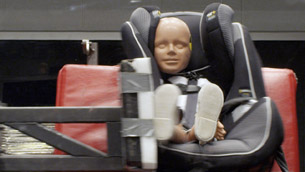
But Emerson isn't waiting for the government to set standards. He tests 4,500 seats every year in a crash-test lab that rivals those of car companies. His laboratory boasts three full crash-test sleds and 14 crash-test dummies that cost about $120,000 each."I saved lives today... That's the truth." – Kenny DeBord
More than car seats, he is testing conventional wisdom about what happens during a car crash.
Many in the industry run tests where a crash-test dummy child and car seat slam into the car door. But what happens in a real crash is precisely the opposite – the door slams into the car seat and child. Knowing how a crash actually unfolds, Dorel has put two small cushions filled with air in the car seat to protect the sides of a child's head during an impact.
The crash-test lab, just down the hall from Clayburn's printers and not far from the assembly line, is a powerful reminder for employees that this job isn't just putting pieces of plastic together.
"Not everyone gets to go home at the end of the day and say, 'I saved lives today,'" says DeBord, the plant's operations manager. "I want people we have on the floor to understand that. That's the truth."










Sign in to post
Please sign in to leave a comment.
Continue